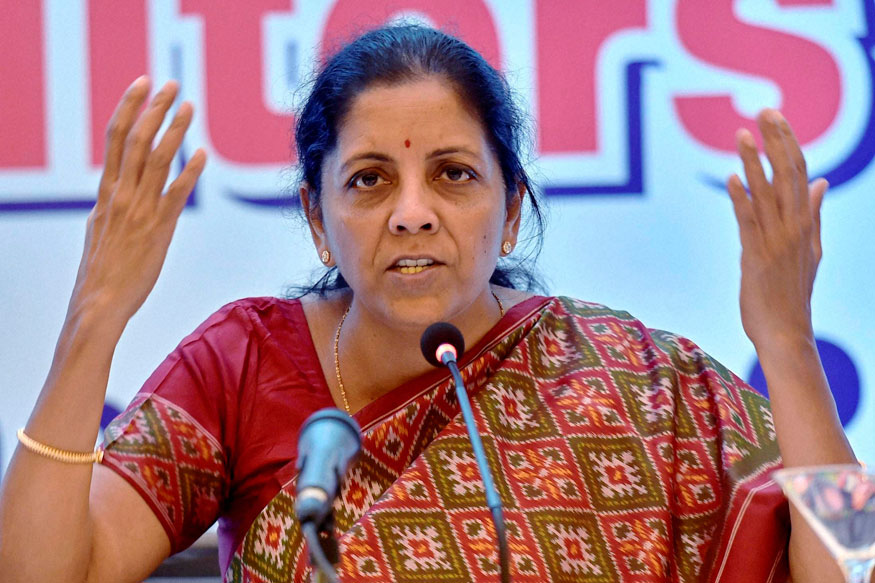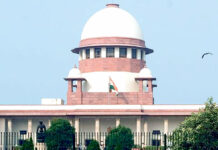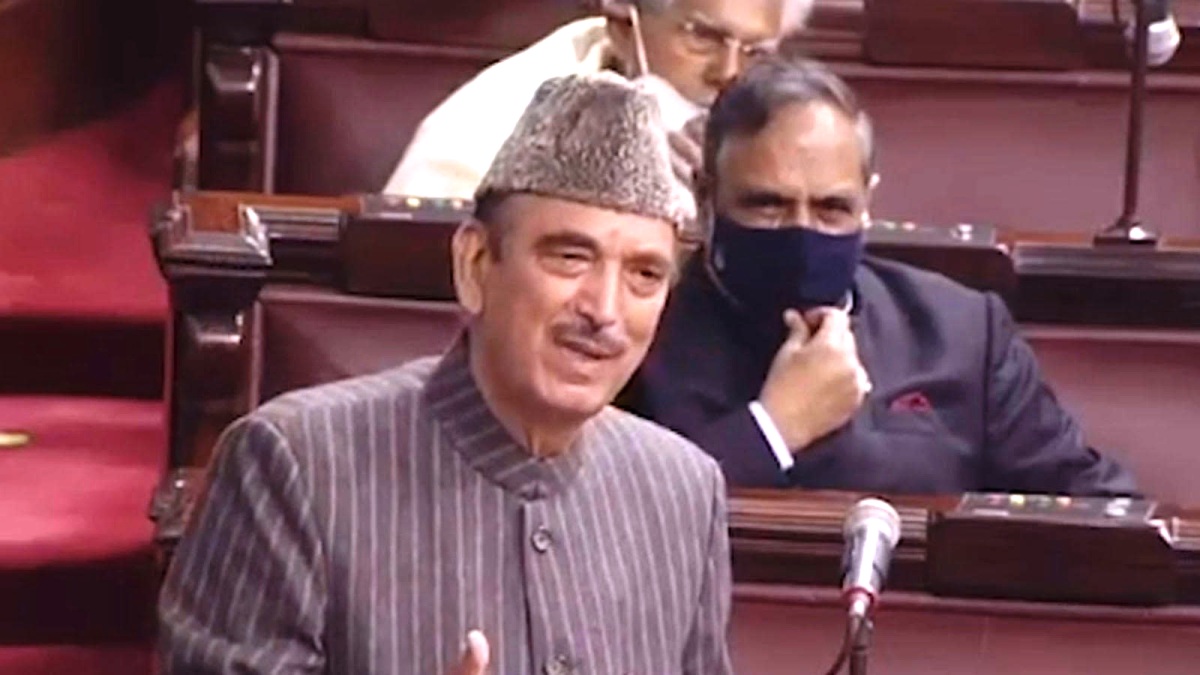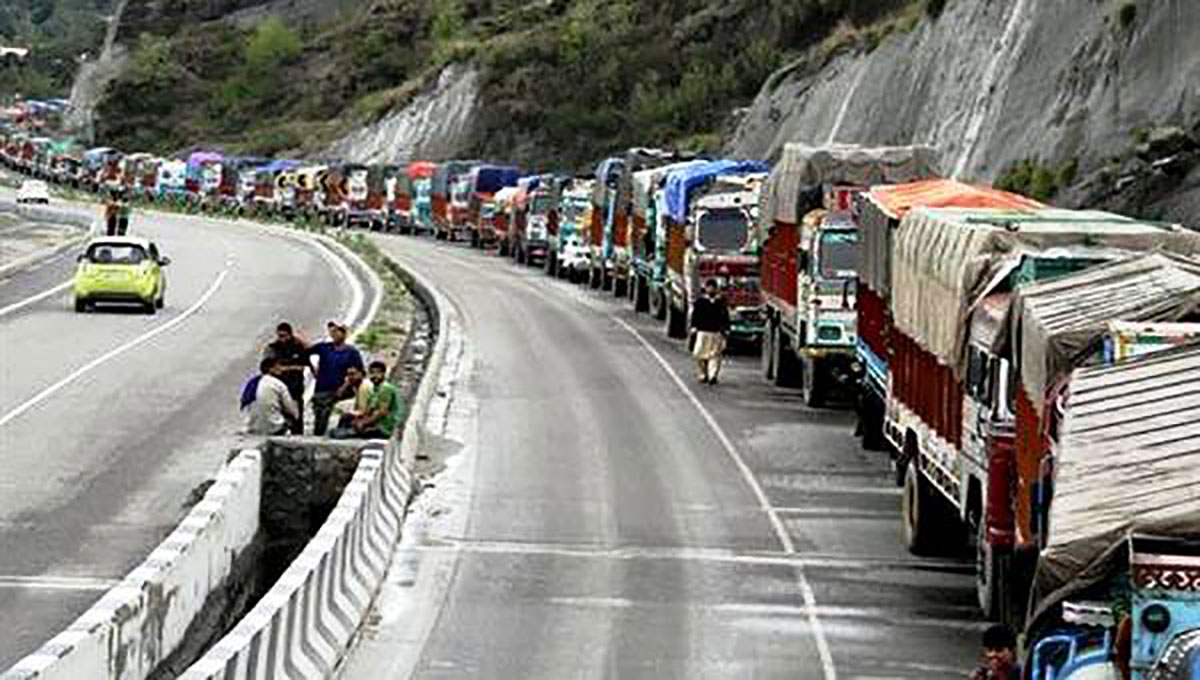Press Council of India (PCI) had constituted a sub-committee on December 19, 2014 to examine the Report of Interlocutors on Media and Media Scenario of Jammu & Kashmir. Led by S N Sinha, the Sub-Committee held its sittings with media persons related to J&K at New Delhi, Srinagar, Baramulla, Anantnag, Jammu, Rajouri and Leh to meet and discuss Report of Interlocutors on Media and Media Scenario of Jammu & Kashmir. It met Governor, Chief Minister, ministers and other political leaders along with State Government Officials, Commanders of army and paramilitary forces. The subcommittee visited all regions of the state early this year.
On October 9, 2017 – the last day of the three year term of the Council, the PCI flew top Srinagar for its last meeting. It released its report on J&K media scene later in the evening. Given the significance of the investigations made by the PCI in the allegation levelled by the interlocutors in their report, the findings of the subcommittee are important. Here the entire report is being published here:
REPORT OF THE SUB-COMMITTEE TO EXAMINE THE REPORT OF INTERLOCUTORS ON MEDIA & MEDIA SCENARIO OF JAMMU & KASHMIR

The topography of the state of Jammu & Kashmir is quite unique: the different natural features and climates of its three regions — Jammu, Kashmir (valley) and Ladakh – make for an interesting study in compatible contrasts. So does its social topography of different cultures, languages and lifestyles of the people of the three regions. The media of the three regions, too, faithfully represent these contrasts. With a density of 124 persons per square kilometer, according to the population statistics of 2011, Jammu and Kashmir is one of the least densely populated States of the Union of India and ranks 28th among its 35 states and Union territories. The State had a total population of 1,25,48,926 in 2011 with a literacy rate of 68.70 per cent.
The report of the special interlocutors on J&K made certain pointed observations in regard to the functioning of the media in the State. The Information Department of the State Government requested the Press Council of India to advise/guide it about the measures required to be taken in respect of the recommendations made by the Report of the Interlocutors, which says:-
“1. Publishers have alleged that newspapers that do not toe the official line are denied government advertisements. On the other hand, the Government alleges that certain newspapers publish unsubstantiated stories and engage in a vilification campaign. Both these matters need to be investigated by a body like the Press Council of India or the Editors Guild of India
“2. Allegations have also been made to the effect that publishing houses inflate their circulation figures to engage in malpractices.
“3. The sources of funding of newspapers are also a matter of unhealthy speculation. A thorough investigation carried out by the Press Council of India can alone settle the issue”.
Pursuant to this, the Press Council of India, taking cognizance of the matter, constituted a five-member sub-committee to examine the Report of the Interlocutors on media and media scenario. The Sub-Committee consists of S/Shri S.N. Sinha, Convenor; G. Sudhakar Nair, Dr. Suman Gupta, Sondeep Shankar and Prakash Dubey. The committee later decided to co-opt Shri C.K. Nayak as its member.
The Sub-Committee also decided to interact with the Interlocutors and prepared a list of veteran journalists related to J&K to discuss the recommendations of the interlocutors. The Sub-Committee also decided to write to the J&K Government, Ministry of Home Affairs, the RNI and the DAVP to provide lists of the State’s newspapers against whom they may have received specific complaints of foreign funding/anti-national writings and the action taken thereon with due reasons for such action. The Central and State Governments may also provide details of newspapers which were delisted for advertisements during the past five years.
In the interaction, Shri Dilip Padgaonkar and Prof. Radha Kumar of Interlocutors and a number of journalists working outside J&K gave the detailed background of the newspapers’ history and their writings and suggested that the committee should visit all three regions of J&K, that is, the Valley, Jammu and Ladakh, to understand the ground reality and the problems faced by media persons.
The committee visited Kashmir and met various groups of media persons and officials numbering about 300, of the J&K Correspondents Club, Kashmir Working Journalists Association, Working Journalists Association Kashmir, Kashmir Young Journalists Association, Kashmir Photo-journalists Association, News Agencies Association, Kashmir Editors Guild, Jammu and Kashmir Joint Forum of Newspapers Editors, Jammu Newspaper Guild, Officials of Doordarshan, All India Radio and some senior Journalists. It also met government officials and political leaders, including the Hon’ble Governor Shri N.N.Vohra, Chief Minister Mahbooba Mufti Sayeed, Leader of Opposition Omar Abdullah, Finance Minister Haseeb Darbu, and Information & PR Minister Chowdhary Zulfikar Ali, besides senior MLA Yusuf Tarigami and Gulam Hassan Mir. The Committee also interacted with Director Information and officials of the State Information Department, the General Officer Commanding (GOC), 15 Corps, the IG and other officers of the Central Reserve Police Force (CRPF) and the Director General of the J&K Police.
The committee visited Baramulla in North Kashmir and interacted there with the members of the Baramulla Working Journalists Association and officials. Another meeting was held at Anantnag in South Kashmir with the Anantnag Working Journalists Association. The Committee also went to Jammu and interacted there with members of the Press Club Jammu, the Jammu Newspapers Editors Guild, Jammu Newspapers Association, Jammu Kashmir Press Association, All Jammu Newspaper Editors Association (Regd.), J&K Print Media Welfare Association, Online Portals Delegation, Radio Kashmir Jammu, and senior editors and journalists apart from Information Department officials. The committee also went to meet the journalists in Rajouri & Poonch and interacted with delegations of Print and Electronic Media under the banner of the Press club of Rajouri and Poonch. On the last leg of the interactions, the committee went to meet the Journalists of Leh in Ladakh region.
At all these places, media persons were happy to know that a committee of the Press Council of India had come to see them and learn about their problems. They expressed with gratitude their appreciation of the PCI for sending this team to understand the issues related to the Jammu Kashmir media.
 The turmoil in Kashmir has adversely impacted the business in general, which has suffered heavily. The media industry, however, saw a growth out it, but at the heavy cost of reported loss of live of more than a dozen journalists/media persons. The media’s growth has been high during the past two decades, which have seen a big increase in the number of newspapers and periodicals in the State.
The turmoil in Kashmir has adversely impacted the business in general, which has suffered heavily. The media industry, however, saw a growth out it, but at the heavy cost of reported loss of live of more than a dozen journalists/media persons. The media’s growth has been high during the past two decades, which have seen a big increase in the number of newspapers and periodicals in the State.
The number of government-approved newspapers/ periodicals in the State for the release of government advertisements has now increased to as high as 467. The Jammu division accounts for as many as 271 of these, while the Kashmir division has only 196 of these. Ladakh has two publications which are not empanelled. The total number of the State’s newspapers/periodicals on the DAVP panel is only 146, of which 58 are from Kashmir and 88 are from Jammu. The total number of accredited journalists in the State is 265, of whom 130 are in the Jammu Division and 135 in Kashmir. There is no accredited journalist in Ladakh. The global satellite television boom has also impacted Jammu and Kashmir, which shows a big boom in the number of bureaus of news channels and the growth of local cable channels run by cable service operators. The media industry, thus, has become a huge job provider to young journalists. But since private business has been shrinking, there is little scope for private advertising and this is making the media heavily dependent on government advertisements.
The Union and State governments reportedly at times use this situation to their advantage by arm-twisting the media without any legitimate reasons. It was interesting to learn that on occasions, when the Centre stops the advertisement of a particular media house, the State government tries to compensate it by giving it more advertisements from its kitty, and vice versa. We also noticed another anomaly in the accreditation policy of the State government, which grants accreditation only to the journalists of Srinagar and Jammu. No accreditation is given to any journalists working from other regions or districts. The State Government has, of course, come out with an accreditation and welfare policy for journalists but it has yet to implement it. The advertising and empanelment policy has also been made but not fully implemented as yet. It is a general complaint of newspapers that they are discriminated against because of the non-implementation of the policy. The Government needs to be more sensitive towards journalists who are also serving democracy while doing their duty. It must, therefore, take urgent steps to implement the new welfare policy for media persons without any further delay.
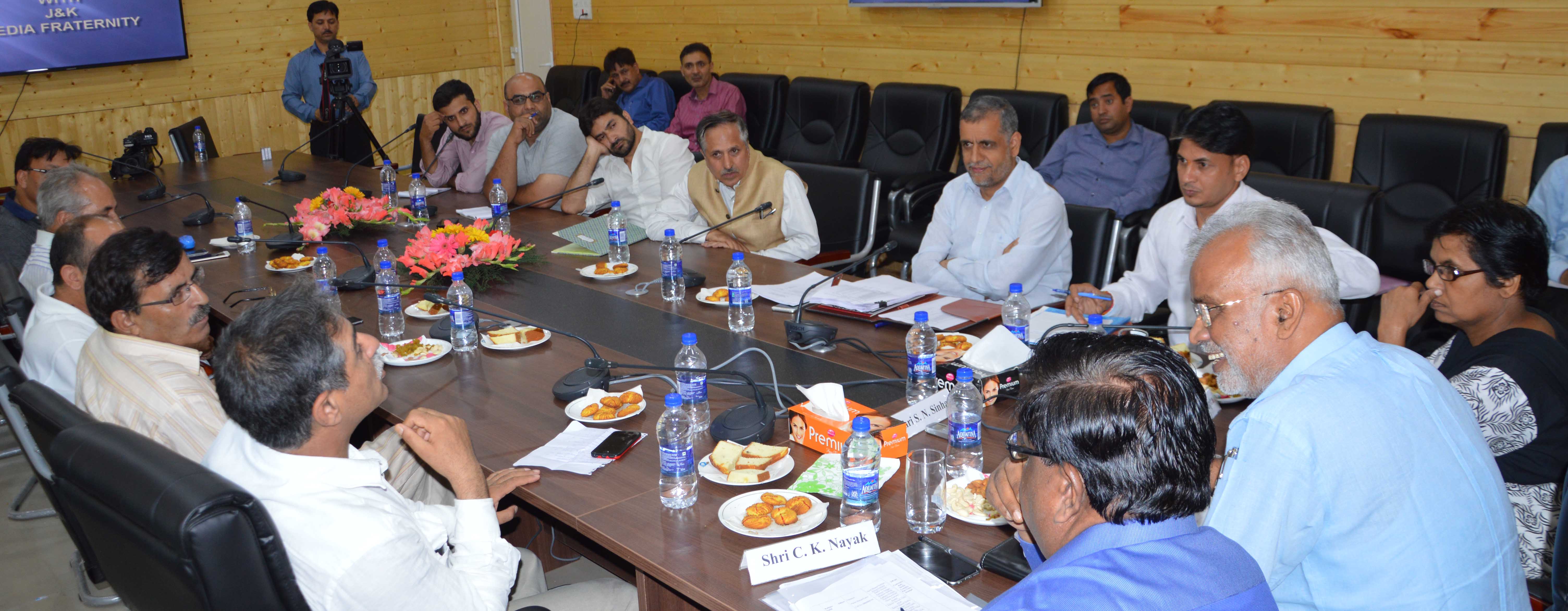
Going through the two narratives of the Kashmiri media and the media of the rest of India, it is clear that the complexity of the situation throws up big challenges for the State’s media. They have to make difficult decisions in different areas from field coverage to newsroom decisions to editorial policy because of different political and militaristic as also militants pulls and pressures. The journalists working in Kashmir have to manage the reality of walking on the tightrope amidst the threats of gun and political arm-twisting.
Interwoven in the media story of Jammu and Kashmir are the regional sub-nationalisms, turning it into Jammu versus Kashmir, as the two regions of the state pull in different directions. In the national media, the focus of the news mostly remains on politics, military and ceasefire violations. The State-centric approach to cover a state like Jammu and Kashmir has led to the alienation of its people. The people were sensitive about the way they were being reported in the national media particularly electronic media which is seen as deliberately misinterpreting facts and events. Each one in Kashmir, from the Governor to the Chief Minister to other political leaders to armed forces to journalists to common persons on the road echoed the sentiment expressed by the Chief Minister when she said: “I request the national media, the electronic media, not to show such discussion on television that develops hatred against the people of Jammu and Kashmir throughout the country. There are some who pelt stones, but not all the youth from Kashmir pelt stones.” Jammu and Kashmir is the crown of India and people of the state have a right over every inch of the nation.
“It (Jammu and Kashmir) is the soul of this country. When there is Jammu and Kashmir, there is India. The people of Jammu and Kashmir have a right not only over Jammu and Kashmir, but over every part of the country and they should assert it,” she said.
According to her, the so-called national TV channels are doing great harm to both the nation and Kashmir in the name of patriotism by interpreting it wrongly.
The power of the media has to be understood by the political leadership and officials in the State and the Centre as well as the armed forces operating throughout Jammu and Kashmir to provide authentic news from direct sources to the local media. Today news travels very fast and it will not wait for any information after a time. So the correct news has to be shared by the authorities without wasting time. This will help curb the rumours that spread like a wild fire on social media.
Jammu, Kashmir and Ladakh are surrounded by hostile countries and the media working in such conditions needs special attention in terms of the enemy’s propaganda war, people’s faith and the country’s safety.
The Press Council of India Committee is thankful to the State’s Director of Information & Public Relations and his staff for cooperating with us and facilitating the required assistance to us. We are also thankful to all political leaders and officials of the armed forces for their cooperation to apprise us of the media scenario in the state. We are especially thankful to all media friends who gave us time to understand the problems of the media and their working in such hostile conditions.
We hope our detailed report and recommendations will find a solution to the problems of the media and help them to make a strong and vibrant free media in the state of Jammu & Kashmir as the Press is an essential part of the democratic setup. Kashmiriyat is unique to Kashmir but it is also in harmony with the best values of Indian society.

Conclusion:-
- During the committee’s interaction with various newspaper editors, owners and journalists, they all spoke about the discrimination they, particularly medium and small newspapers/periodicals, faced in the issue of government advertisements and the rates of the state which is one of the lowest in the country. The committee appreciates this problem as the State does not have much industrial or commercial advertisement support because of the problems it faced from decades. Since the survival of the media is vital in the interest of the nation and democracy, it has to be supported by the government. The State Government has also come out with a policy of empanelment and advertisement but it shall have to be implemented in full without discrimination.
- As for the issue of inflated circulation figures of newspapers/ periodicals, the committee is aware that it is a country-wide phenomenon. The State’s Information directorate and the RNI must check the circulation figures through different modalities and act accordingly. The issue of the publication of newspapers and periodicals by retired information department or other government staff to corner government advertisements, too, is a reality and has to be put to an end by the Government only.
- As for the issue of unhealthy sources of funding of some media organisations, we can understand that conclusive evidence of such funding is difficult to come. Even the government agency could not provide any evidence in this regard, though there is some talk about funding from across the border. They alleged that funding across the border was there some 25 years ago, but it cannot be verified or crosschecked now. There is no major complaint about such funding of newspapers now, but there are such suspicions because of “anti-Central/State government or anti-armed forces writings” by some newspapers and journalists. The Government and their agencies should file complaints in such cases with the Press Council of India, which could then consider these on merit and decide the issue. The committee was told by media representatives that government agencies should use all their resources to check and trace any dubious funding and take strong legal action if there is any credible evidence.
- The issue of the accreditation of journalists concerns the grass-root journalists. The State’s accreditation committee should consist of the representatives of all the recognized state and national level journalists’ organization. It has come to the notice of the committee that at present only journalists working in Srinagar or Jammu get state accreditation. This facility of accreditation should be extended to journalists working at the district level, too, and in certain special cases, to those working in border areas also.
- The state of J&K is passing through a disturbing situation and it is tough to perform journalistic duty in such an environment without adequate safety precautions. News photographers, camerapersons and reporters, therefore, should be provided with safety kits, including bullet-proof jackets and helmets, by their organizations or the Government as they, too, are performing public duty.
- The non-availability of information from government agencies compels the journalists to find out news from unauthorised sources, which creates a wrong impression among the readers or viewers. The committee discussed this issue at length with security agencies and they, too, appreciated the problem. The committee suggested that a combined Information Centre should be formed in all three regions to provide all relevant official information without wasting time to the local media persons.
- The issue of curfew passes to the journalists, too, was discussed by the committee. Delay in the issue of curfew passes to media places needless hurdles in their prime work and non-recognition of official curfew passes by security agencies. This creates bad blood between two important functionaries of democracy. Sometimes, the authorities issue “no movement” orders without imposing curfew in the area and this, too, obstructs journalistic work. The government and armed forces, must take care to honour the press accreditation cards and the identity cards issued by recognized media houses.
- The committee is really concerned about the stoppage of internet and mobile services in the State. In this age, no media can work without these supports. The policy of curbs on internet and mobile services has to be reviewed urgently. The committee was surprised to know that in the Ladakh region, internet of BSNL was down for four months and even now, no internet or mobile data works in the area regularly. The low powered transmitting system of AIR and Doordarshan is a big handicap in the border area like Ladakh. The authorities need to take care of these issues on a priority basis.
- The journalists of the State have been living without any welfare measures for a very long time. Even in cases of death or serious injuries, there is no one to take care of them and they or their families have to face the hardship all by themselves. It is good that the Government has now come out with a policy of creating a journalists’ welfare fund. It should cover all journalists and be implemented without wasting any more time. The fund should be monitored by a committee of journalist organizations. The journalists who were injured in recent past should also be taken care of for their medical needs, as promised by the Hon’ble Chief Minister to the PCI committee.
- More journalists and media professionals should be encouraged to visit Kashmir to give all aspects of coverage for the rest of the country. The state government should provide adequate support to Directorate of Information & PR to encourage pro-active role their side.
- Some special scholarships and internship for young pass out of media institutions to go out of state to get the working experience in their field of journalism. The Jammu & Kashmir media institutions should get more visiting faculty (senior journalists of their field) from outside state to give a broader perspective to future journalists.
- The journalists also raised the question of the non- implementation of Justice Majithia Wage Boards and poor payments for the newspaper staff. The committee is of the view that the Government must enforce the Majithia Wage Board award as directed by the Supreme Court of India.

A group photograph of PCI team with the reporters from Poonch and Rajouri. Pic: J&K Government
Recommendations :-
- The allocation of Advertisement revenue and rate of advertisement in the State should be increased by the State Government. Further DAVP’s policy be adopted for the distribution of advertisements.
- The DAVP should also increase its quantum of advertisement in the state of J & K.
- Small papers/periodicals should be given Centre/State advertisements in all regions of J&K, particularly in border areas.
- The State’s advertisements and empanelment policy should be implemented without any further delay.
- The government should monitor the reportedly inflated circulation figures of newspapers/periodicals. For this, they can ask the RNI to check it regularly.
- Journalists working in conflict situations should be provided with bulletproof jackets and helmets.
- State governments should ensure the implementation of the Majithia wage board award as per the Supreme Court order.
- The J&K Journalists Welfare Fund scheme should cover all working journalists and be implemented without any further delay.
- The journalists already injured should be reimbursed all the medical expenses incurred by them.
- The State should give accreditation at the district level too. In border areas, too, the journalists should be given accreditation to work in the area.
- The government should ensure a system to provide news/ information without delay to local journalists.
- The Army and Para military forces should also work out a more liberal and transparent information system to give news as soon as possible to local journalists. The Public Relations Departments needs to play a more proactive role in providing information and facilitating coverage during any operations.
- Journalists, too, are doing public service during any coverage and, therefore, their accreditation or Press Cards should be duly honoured during curfew or restrictions.
- Since good relations with the media are seen to help control misinformation, there should be regular interaction between local journalists and armed forces, police and the government.
- The media, journalists and their professional associations should play a more professional and ethical role at all levels. They must be concerned about their own black sheep within the fold who tarnish the image of media. The aim of the journalists/media should be to build a better society and for this they have right to question the authorities without any personal interest.
- Any objectionable writing should be clearly defined and reported to the Press Council of India for final disposal. No writing should be branded objectionable and subjected to punitive action until the Press Council has considered the matter and given its views on it.
- The All India Radio and Doordarshan must be strengthened in the State with full staff strength and latest high-powered transmitting equipment.
- Private TV channels should be encouraged to prepare and show special programmes on J&K, to project a positive understanding of Kashmir in the world.
- The gap between Jammu and Kashmir and the rest of the national media should be bridged. Inter- regional media exchange will promote a better understanding among Jammu, Kashmir and Ladakh journalists. Similarly, J&K journalists should be encouraged to visit other parts of the nation and interact with their counterparts there. Journalist teams from other parts of the nation should similarly visit the State to interact with the State’s journalists to understand J&K.
- The Government should encourage professional journalist organizations/ associations to hold sessions and seminars in the State.
The Committee submits its report to the Council.
Shri Prakash Dubey Shri Sudhakar Nair Dr. Suman Gupta
Member Member Member
Shri Sondeep Shankar Shri C.K. Nayak
Member Co-opt Member
Shri S.N. Sinha
CONVENOR



